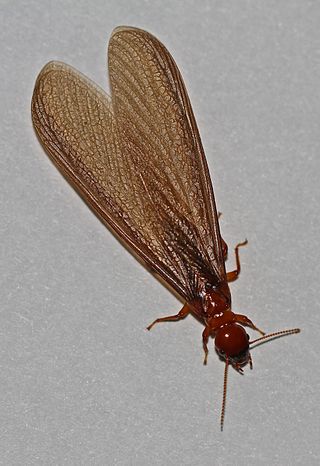
The Neriidae are a family of true flies (Diptera) closely related to the Micropezidae. Some species are known as cactus flies, while others have been called banana stalk flies and the family was earlier treated as subfamily of the Micropezidae which are often called stilt-legged flies. Neriids differ from micropezids in having no significant reduction of the fore legs. Neriids breed in rotting vegetation, such as decaying tree bark or rotting fruit. About 100 species are placed in 19 genera. Neriidae are found mainly in tropical regions, but two North American genera occur, each with one species, and one species of Telostylinus occurs in temperate regions of eastern Australia.

Nebria is a genus of ground beetles native to the Palearctic, the Near East and North Africa. There are more than 500 described species in Nebria.

Nebria livida is a species of ground beetle with two subspecies:

Meloe angusticollis, commonly known as short-winged blister beetle or oil beetle, is a species of blister beetle, native to North America. They average 8–10 millimetres (0.3–0.4 in) in length.

Zootermopsis angusticollis is a species of termite (Isoptera) in the family Archotermopsidae, a group known as the Pacific dampwood termites, or the rottenwood termites. As their name suggests, the dampwood termites can only survive by living off of wood that contains high amounts of moisture. They are found along the wet environments of the Pacific coast of North America. Most are found in the states of California, Oregon, Washington, Idaho, Western Nevada and in southern British Columbia. Termites are well known to be destroyers of wood, and although the dampwood termites can cause some damage, they are not as notoriously known to cause as much damage to buildings as the drywood termites. They occasionally have been carried to other parts of the country through wood shipments, but have not been able to become established in these areas due to undesirable environmental conditions.

Nebriinae is a subfamily of ground beetles in the family Carabidae. There are about 12 genera and more than 840 described species in Nebriinae.
Nebria aetolica is a species of ground beetle in the Nebriinae subfamily that can be found in Albania, Greece, and North Macedonia.
Nebria germarii is a species of ground beetle in the Nebriinae subfamily that can be found in Austria, Germany, Italy, Liechtenstein, Switzerland, and in every state of former Yugoslavia, except for North Macedonia.
Nebria kratteri is a species in the beetle family Carabidae. It is found in Italy, North Macedonia, Albania, and Greece.
Nebria peristerica is a species of ground beetle in the Nebriinae family that can be found in Greece and North Macedonia.
Nebria tatrica is a species of ground beetle in the Nebriinae subfamily that can be found in Poland Czech Republic and Slovakia.
Nebria angusticollis is a species of ground beetle in Nebriinae subfamily that can be found in the Alps of France, Italy, and Switzerland.
Nebria angusticollis microcephala is a subspecies of ground beetle in the Nebriinae subfamily that can be found in the Alps of France, Italy, and Switzerland.
Nebria cordicollis is a species of black coloured ground beetle from Nebriinae subfamily that can be found in Switzerland, Italy, and Germany. The species is about 5 millimetres (0.20 in) long.
Dmytro Zajciw was a Ukrainian and Brazilian entomologist, notable for his collection and for his many beetle discoveries. He was born in Velyka Mykhailivka, Ukraine and died in Rio de Janeiro, Brazil. He was the author of Two new genera and species of neotropical Longhorn beetles , 1957, Contribution to the study of Longhorn beetles of Rio de Janeiro , 1958, and was the first to describe the genera Adesmoides and Pseudogrammopsis, as well as the species Beraba angusticollis and Mionochroma subaurosum, among many others.
Sophronica angusticollis is a species of beetle in the family Cerambycidae. It was described by Per Olof Christopher Aurivillius in 1928. It is known from Somalia, Ethiopia, Tanzania, and Kenya.

Scaphinotus angusticollis is a species of ground beetle in the family Carabidae. It is found in North America.
Derocephalus angusticollis is a fly in the family Neriidae. They are typically found on the east coast of Australia near rotting vegetation. Aggregating on the rotting bark of trees such as Acacia longifolia and other trees in New South Wales and southern Queensland. D. angusticollis flies found in the wild have accelerated speeds of development and age of mortality when compared to those in captivity. Derocephalus One characteristic of the neriid fly is that it demonstrates sexual dimorphism. Males have a larger build as well as exaggerated physical characteristics such as wider heads and longer limbs. Certain phenotypic characteristics are dependent on the diet of the parents.






